
◆ GAUGE ‘OO’ ◆ MODEL Accurascale ICI hoppers ◆ PRICE £79.95 per twin-pack ◆ AVAILABILITY Accurascale stockists Web www.accurascale.com
Originally manufactured on behalf of Hattons, by Oxford Rail, the famous ICI limestone hoppers first appeared as RTR models in 2018, selling through extremely quickly. As someone with a passion for Peak District stone trains, I sadly missed out on these models first time round and have been deterred by subsequent high prices on the pre-owned market.
Thankfully, after the demise of the Merseyside retailer, Accurascale secured the tooling for the hoppers, with a new production run arriving a little earlier than originally planned. Built from the late 1930s until 1953, over three different batches, by Charles Roberts in Horbury, the sturdy steel wagons were ordered by ICI to transport crushed limestone from Tunstead Quarry to the soda ash plants in Northwich.
Representing some of the first high-capacity hopper wagons to work in the UK, they lasted in frontline use until 1997, being withdrawn due to a lack of air brakes, as many examples were still in good condition – a testament to the quality of design and construction.
Offered in 15 different twin-packs, Accurascale kindly supplied three different pairs for review, spanning the 1950s-1973 (pre-TOPS), 1973-1992 and 1992-1997 periods. Accordingly, each set of wagons feature slight detail and lettering differences to suit each era, most notably in terms of bogies, as the tooling caters for the original diamond frame pattern and later plate-style frames, the latter featuring either oil or roller bearing axleboxes, according to era. There are also variations in the size of the raised ICI lettering, as per the real thing, while the later set has the characters removed.

IN DETAIL
These are impressive models, with the open frame chassis being delightfully captured, along with the various hopper support brackets and a veritable sea of rivet head detail. The vacuum cylinders at each end, with attendant pipework, look the part and the hopper door control gear is also accurately rendered, as is the hopper interior.
Metal bufferheads (un-sprung) have a refined profile and NEM coupler pockets, although fixed to the underside of the chassis, have flexible pivots to help the wagons cope with second radius curves. The wagons feel fairly light, each weighing-in at 46g, but the finely profiled three-hole disc wheels rotate freely on their axles and all six of our samples ran faultlessly under test conditions.
" These are impressive models, with the open frame chassis being delightfully captured, along with the various hopper support brackets and a veritable sea of rivet head detail "
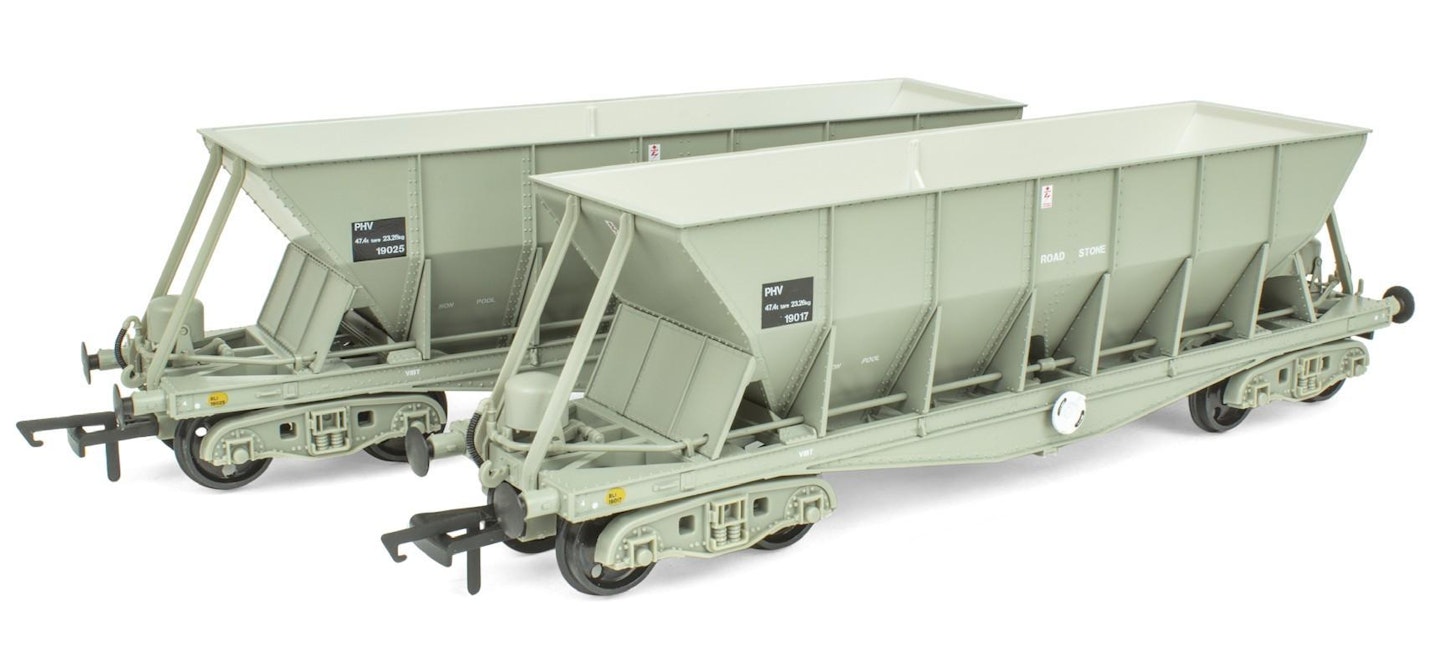
The drab grey paintwork is evenly applied and the various printed number and information panels are crisply printed and fully legible. Coupled with the excellent surface relief and a wealth of detail, the overall effect is satisfying.
Anyone with an interest in the limestone and aggregates traffic from the Peak District – and the North West freight scene in general – will be tempted by these new models. The prototype's long career saw them hauled by a wide range of classic locomotives, from the LMS '8Fs' through to Class 25s, pairs of '20s', Class 40s and 'Peaks' and, latterly, by pairs of EWS Class 37s.
It's great to see the Hattons tooling enjoying a new lease of life.
(GD)
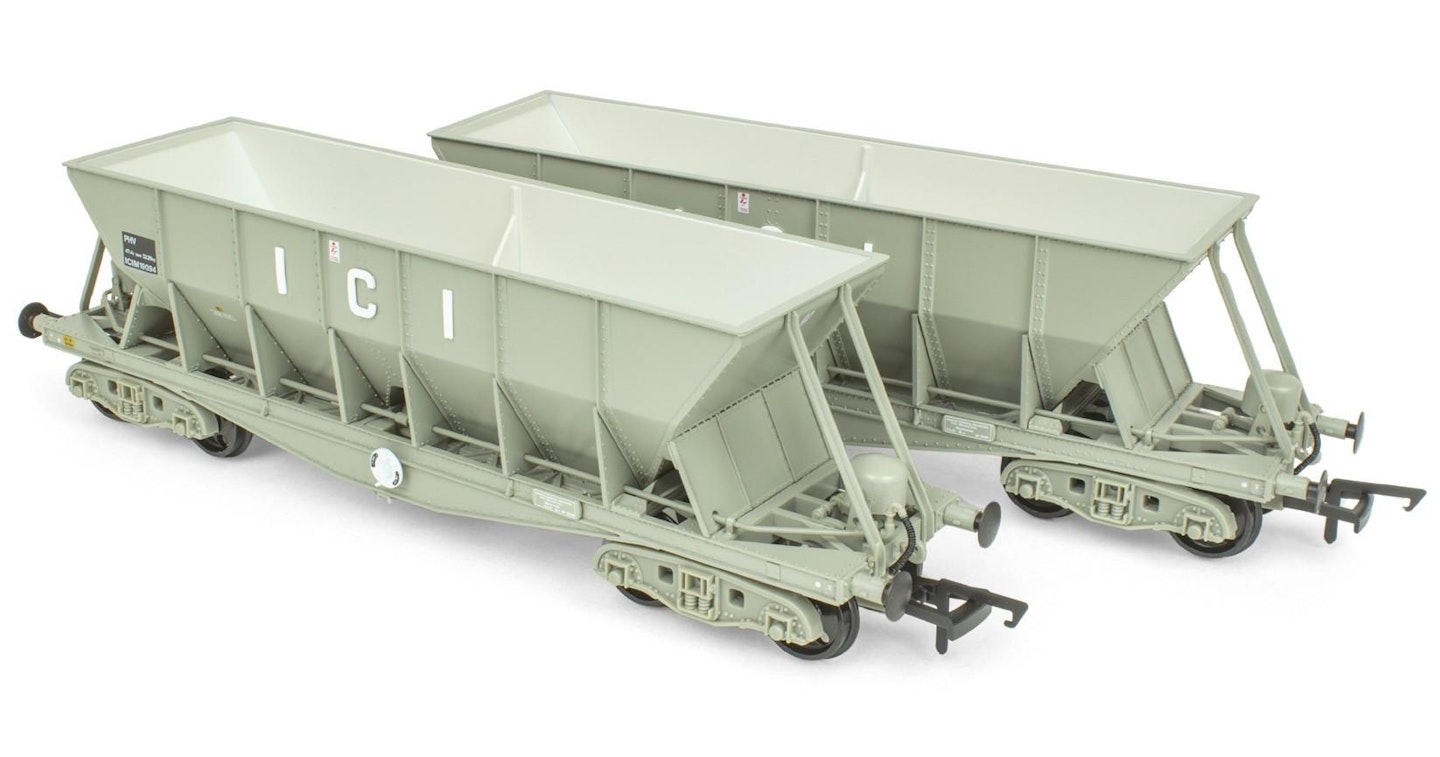
3 things we like
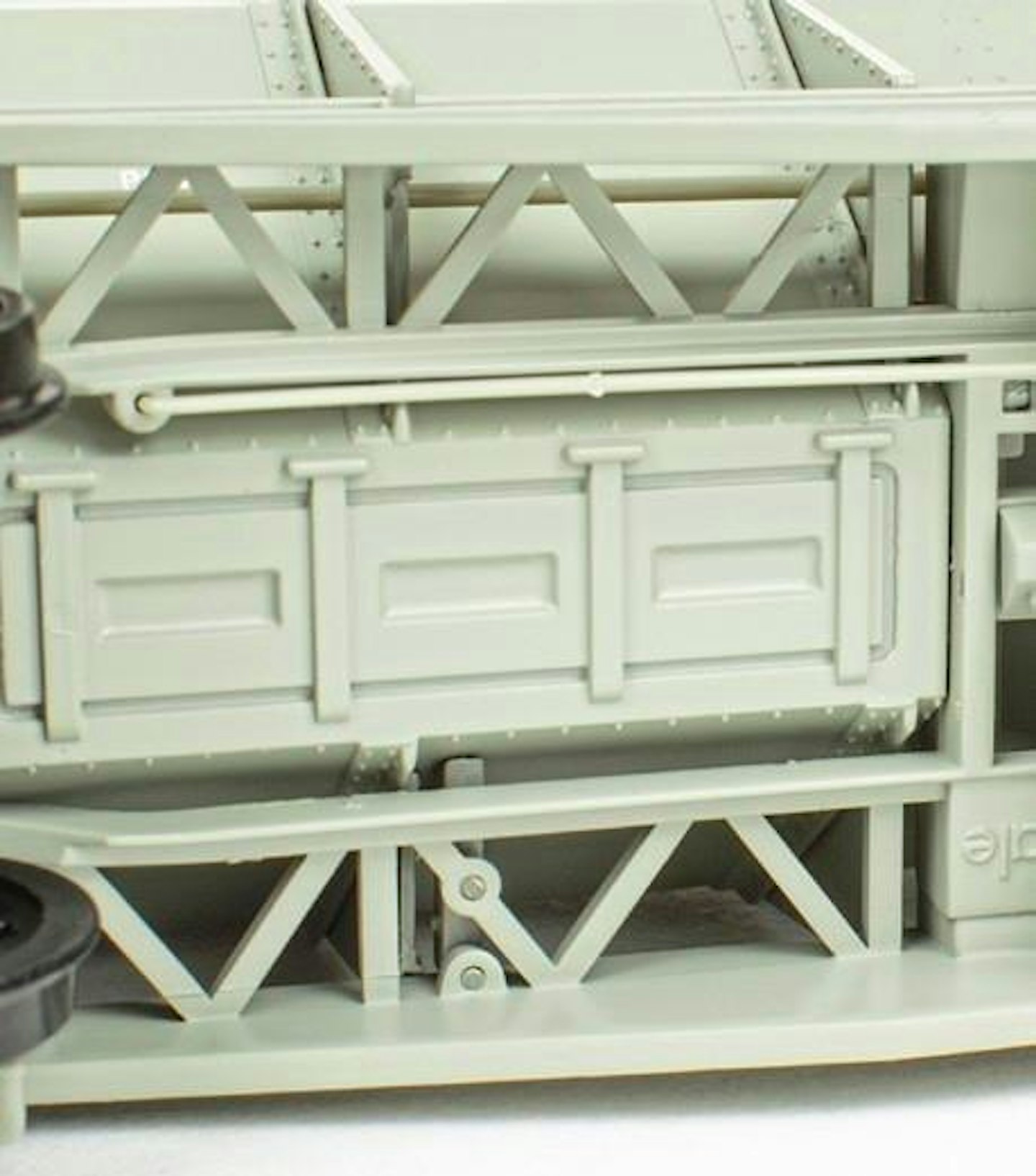
1 Distinctive open frame chassis replicated faithfully.
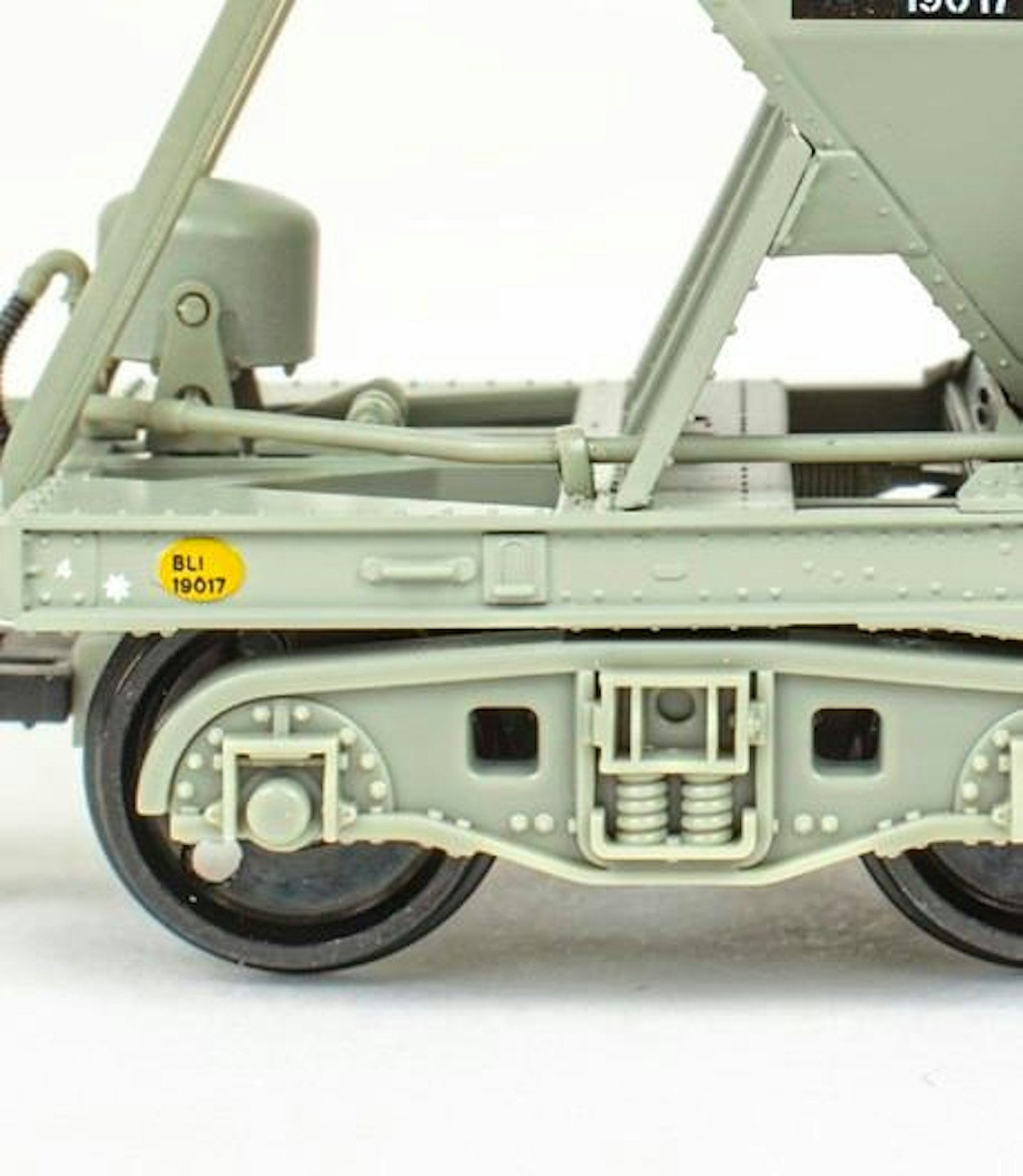
2 Early and later style bogie frames feature.
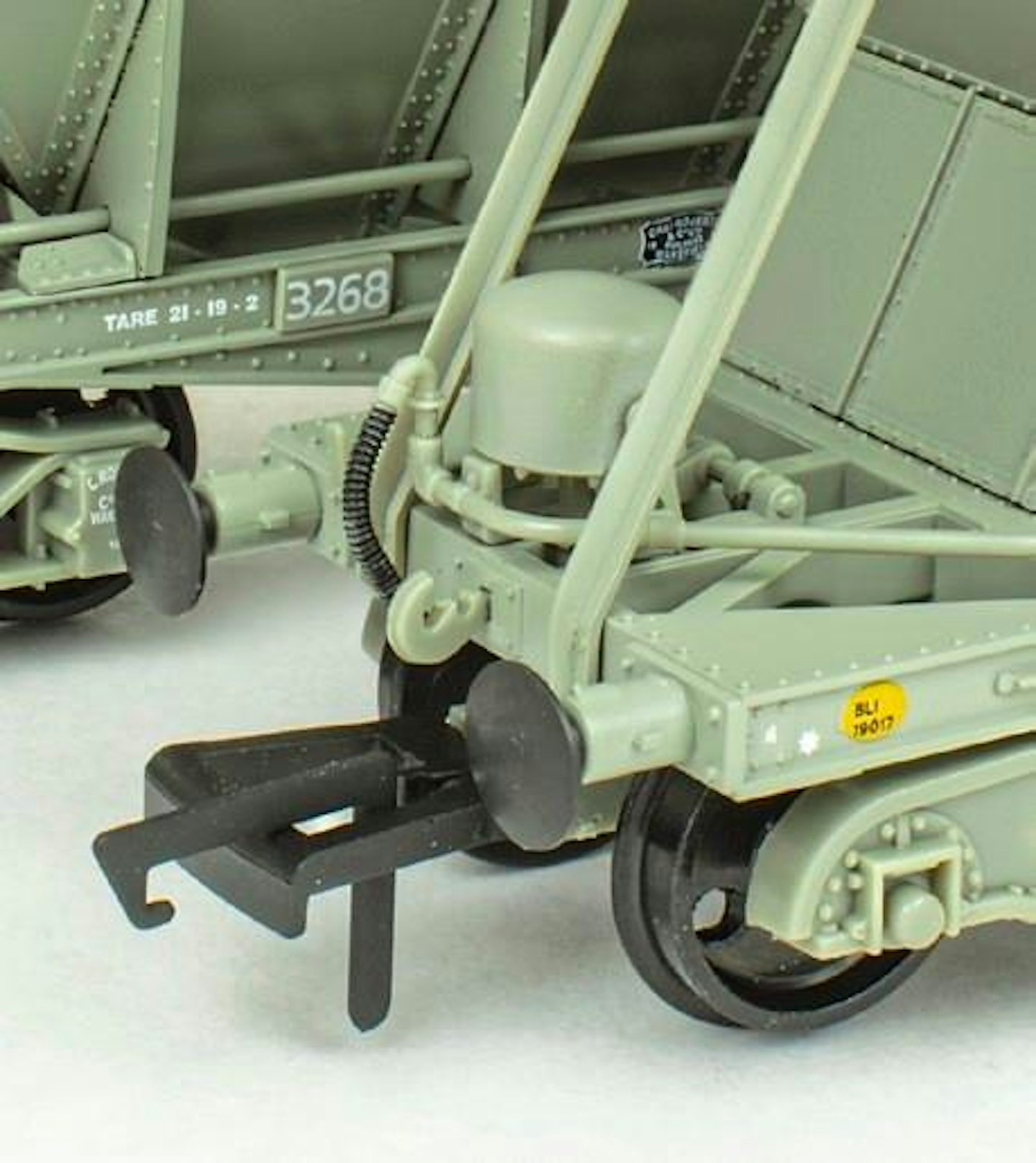
3 Vacuum brake gear at each end is well crafted.
SUMMARY
PROS
● Looks and fidelity.
● Impressive level of detail.
● Finish.
● Smooth runners.
CONS
● Nothing.
FINAL VERDICT
Excellent – a very welcome return.
Each issue of Model Rail covers every stage of modelling, from buying your first model train set right through to museum standard fine-scale modelling. Find inspiration for your next project with our helpful tips, advice and in-depth detail on model trains and layouts.
Choose the right subscription for you and get instant digital access to the latest issue.

